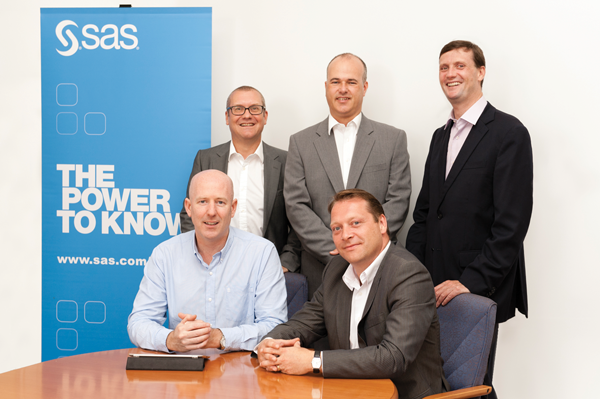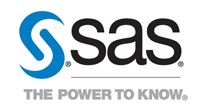Analytics: a local and global opportunity
Big data analytics provide the Government with an opportunity to turn data into knowledge that will enable better decision-making while providing opportunities for jobs and growth. SAS Ireland’s John Farrelly, Emmet Dowling and David Ferguson tell eolas about some of the factors supporting this opportunity, including the key role education has to play.
Analytics presents a unique opportunity for Ireland Inc., both in an operational context and for policy making, SAS Ireland’s Public Sector Client Director Emmet Dowling contends. The increasing volume of available data generated and captured by the public sector is growing exponentially across the globe. McKinsey predict an annual 40 per cent growth in global data. Analytics allows both businesses and governments to analyse these volumes of data in minutes to reveal previously unseen patterns and insights. It is these patterns and insights that can allow decision makers to use this evidence as a tool in making better decisions, assessing their impact and developing appropriate interventions. Additionally, by analysing more up to date data, governments can make better and more timely decisions.
The Centre for Economics and Business Research (Cebr) report ‘Data equity: Unlocking the value of Big Data’ estimates that the economic value of big data (i.e. the data dividend) was worth £25.1 billion to UK private and public sector businesses in 2011. It expects that to increase to £40.7 billion per annum by 2017.
Farrelly states: “This dividend is equally applicable in Ireland. If done correctly and respecting an individual’s privacy, there is huge value in the aggregated data that the Government could leverage to drive transformation, it’s about treating data as an asset.”
From an operational context, the Government is already using analytics to drive efficiencies.
For example, The Revenue Commissioners’ real-time risk framework is used to support increased compliance within the PAYE tax system. The Taoiseach’s June 2012 Public Service Excellence Award was given to the project which embedded predictive analytical models and risk rules into the Revenue’s systems to ensure that transactions are risk-assessed in real time, saving approximately €2.1 million.
“While a lot has been achieved to date, there’s more that can be done in the areas of cost reduction, optimising services to citizens and making evidence-based policy decisions,” Dowling explains.
Procurement can become more efficient as future needs are mapped out and predicted. By implementing an analytical approach the procurement services of the Danish Municipalities, who spend over €150 million per annum, have made savings of 5 per cent of their total spend to date.
Reducing fraud and error is another important issue for government. The UK National Fraud Authority estimates that it cost the UK Government £20 billion in 2011/12. Extrapolated to Ireland, that approximates to €1.25 billion annually. While there are a number of key initiatives underway in Ireland to address this issue, additional savings could be made by broadening the reach of these projects.
In Healthcare, areas such as pre-emptive diagnostic care i.e. seeing patterns of behaviour, making predictions and intervening earlier in the health process, can be used to provide better patient outcomes. An exemplar in this area is the Brigham and Women’s Hospital in Boston, Massachusetts, which provides timely information to the right decision makers enabling action that increased operating margins from $20 million to $100 million and moved patient satisfaction scores from the 40th to the 90th percentile.
These examples leverage the available data and use analytical techniques to effect real change, save money and continuously monitor policy effects.
Global Opportunity
“For the first time ever, the computing power and processing technology which was only available to the biggest companies in the world, is now available on tap. This is a game changer we need to take advantage of”, says John Farrelly head of SAS Ireland.
“From smartphones to social media sites and smart devices, they are all contributing to the vast amount of data available. Ireland Inc. can play on the global stage through exporting intellectual property and by becoming a hub for analytics”. It’s important that industry takes the lead creating intellectual property, Farrelly contends. Ireland could then become “a blueprint for data analytics in government as it is suitably sized but suitably complex as a test-case for the global audience.”
SAS Ireland’s ultimate aim, according to Dowling, is “to take the analytics agenda towards achieving the best possible outcomes, not just in government, but in business, finance, insurance and high-tech manufacturing.”
On-going initiatives include government funding for industry-led technology centres, including a data analytics technical centre. In addition, Science Foundation Ireland’s funded strategic research cluster, Clique, is focussed on Graph & Network analysis and Visualisation.
Having all that data and computing power is only part of the equation. Having people that can exploit that asset is also important. McKinsey’s June 2011 big data report said that the United States faces a shortage of 140,000 to 190,000 people with deep analytical skills as well as 1.5 million managers and analysts to analyse big data and make decisions based on their findings. When extrapolated into an Irish context, SAS estimates that, by 2018, there will be a shortfall of circa 5,300 deeply analytical positions and circa 40,000 management positions in Ireland alone.
SAS’ founder Jim Goodnight sees education as critical to the success of people, organisations and nations. David Ferguson, a member of SAS Ireland’s business advisory team, cites the US Chamber of Commerce which represents 200 investors in Ireland. It has called for more STEM (science, technology, engineering and maths) graduates and the Government’s Project Maths initiative is “a clear example of government shaping policy to address the needs of those investing in Ireland.”
SAS has made their technologies available to students and professors in institutions ranging from Dublin Institute of Technology, University College Dublin, Queen’s University Belfast, University College Cork and Trinity College Dublin.
In addition SAS is supporting initiatives at secondary school level through the ‘Bridge to College’ programme. SAS is committed to the education of second and third level students with the skills to exploit the data dividend opportunity.
From an industry perspective, Farrelly recognises that more skilled individuals are needed in order for organisations like SAS to create more jobs for Ireland.
SAS Ireland’s Innovation Lab is an example of industry taking the lead on up-skilling graduates and creating employment in the analytics sector. A number of graduates have already been hired this year to work on analytical programmes and that has the potential to grow to approximately 50 people in the next 12 to 18 months.
For more information contact
Emmet Dowling on:
Tel: +353 (0)1 613 6420
Mobile: +353 86 8270 220
Email: Emmet.Dowling@irl.sas.com
www.sas.com/ireland







